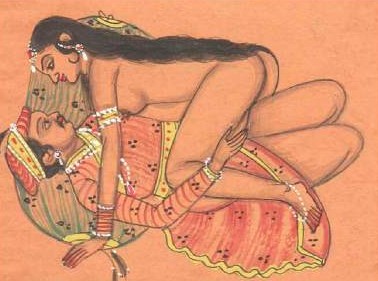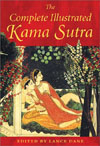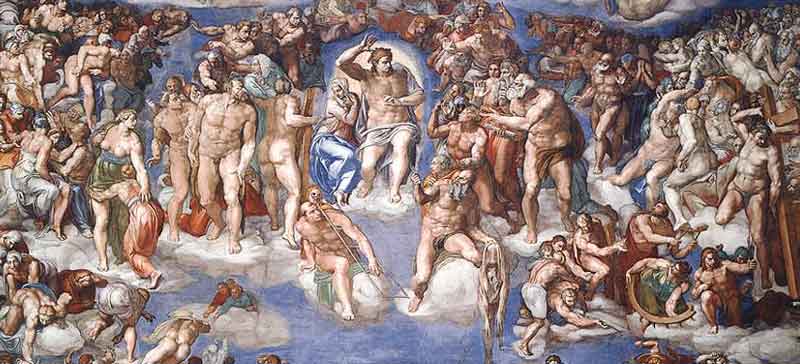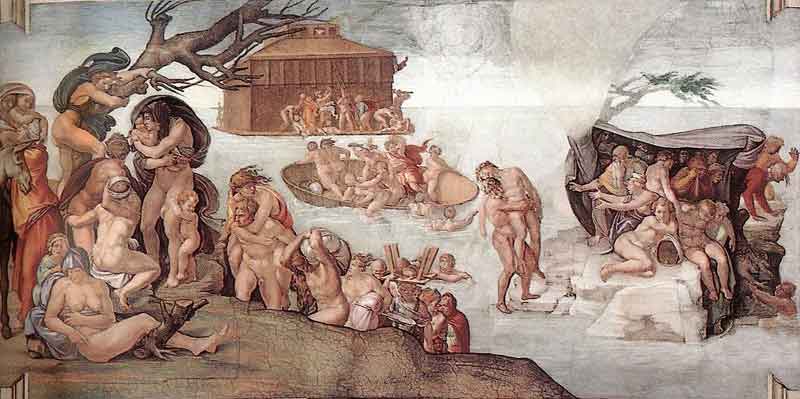Breasts and Art
In all types of ancient art medium, the female breast was often exposed. Even in the Christian realm, paintings, sculptures, and drawings commonly and frequently depicted females with one or more uncovered breasts. The Sistine Chapel is adorned with female breasts.
This led to a period during the middle ages when a priest was appointed to censor the many frescoes and paintings by adding circumspect fig leaves and other adornments to conceal female breasts and male and female genitalia.
|
 |
| One of the less graphic illustrations from the Kama Sutra |
Kama Sutra
The Kama Sutra itself was written about 1600 years ago. But its author, Vatsyayana, based his work on even earlier works, which themselves had been based on earlier works, and so on and so on. The origins of the teachings are credited with the original laws and teachings handed down from the gods.
 |
The Complete Illustrated Kama Sutra Hardcover: 320 pages. Inner Traditions Intl Ltd; (September 2003) About the Author Lance Dane is a writer, photographer, renowned scholar, and
the founder of the Sanskriti Museum of Every Day Art in Delhi. He has dedicated
over five decades to researching and archiving all aspects of the Kama Sutra
and other pre-Vedic and Vedic classical erotica. His private collections of over
9,000 books on Indian art and architecture and his 300,000 archival photographs
are housed in the Indira Gandhi National Centre for Arts in New Delhi. He lives
in India. |
The writings were originally translated into English by two Indian scholars hired by Sir Richard Burton in 1876. Burton and a friend then further edited the text, removing the more graphic parts, and removing ideas that didn't mesh with their own preconceptions. The work was published by the Kama Shastra Society in Great Britain in 1883. (Burton, incidentally, was also the first non-Muslim to enter Mecca, discoverer of the source of the Nile, and collected and translated many other erotic works such as the Perfumed Garden and the Ananga Ranga.) The Kama Sutra was declared illegal and banned in England until it was republished in 1963. It was very popular at the time, probably due to it's graphic (and Victorian) depictions of sexual positions in what could possibly be termed at the time as Hindu pornography.
But the Kama Sutra is much more than a sexual position manual, as it contains broad counsel in all aspects of love. For example, the writer advises,
Ardent young men, do not neglect the preliminaries! Endeavour to satisfy your mistress. Listen to her desires. Some men, carried away by the power of their desire, forget the prelude, only to be surprised when they are pushed away later! Yet it is such a delight to kiss, to caress, to nibble one another... To explore with your hand or your mouth her body, her breasts, her neck, her belly, down to her innermost curves. Fulfilled, the beloved shall return these kisses and caresses wholeheartedly. No part of the beloved's body should be neglected. Her lover shall make it his duty to discover them, to reveal to his mistress all the pleasure she can receive from them.
Emotional awareness and connectedness, as Vatsyayana suggests above, will take you farther than some technique-obsessed approach to sex.

